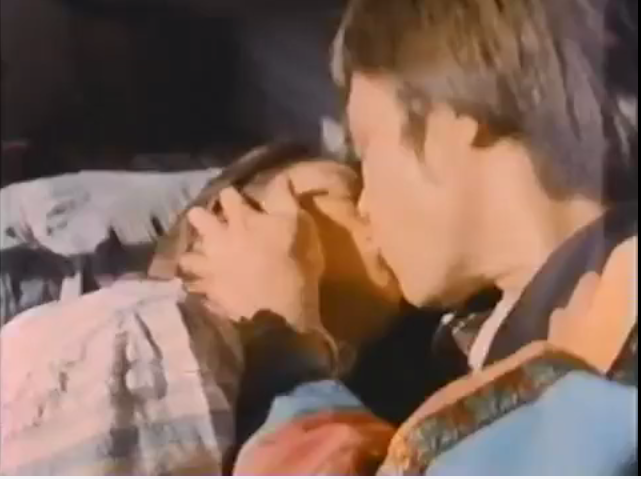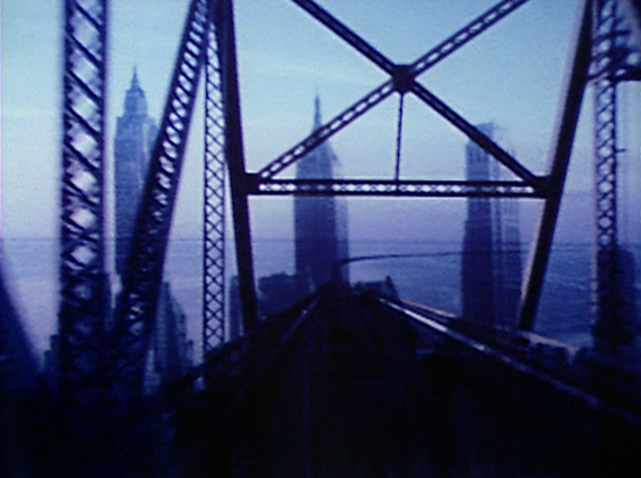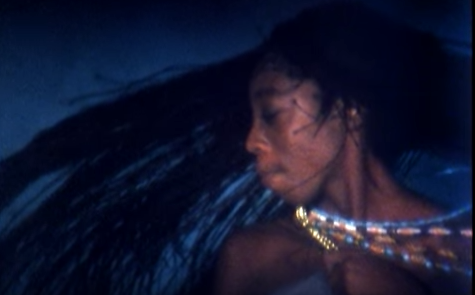By providing your information, you agree to our Terms of Use and our Privacy Policy. We use vendors that may also process your information to help provide our services. This site is protected by reCAPTCHA Enterprise and the Google Privacy Policy and Terms of Service apply.
6 Avant-Garde Female Filmmakers Who Redefined Cinema

Aubrey Page

Maya Deren
It’s nearly impossible to begin a discussion on experimental film without including Maya Deren, whose foremost 1943 film “Meshes of the Afternoon” has become one of the most influential and important works in the early experimental movement. Shot on 16mm with a windfall she received after her father’s tragic death, the film was one of the first to employ narrative structure in an experimental framework, helping to change the cinematic landscape of avant-garde film and cementing Deren as an indispensable participant in the practice of experimental media. A vocal supporter of independent film, famously stating, “I make my films for what Hollywood spends on lipstick,” Deren was a pioneer of the DIY film movement and is, for many, the definitive mother of experimental and avant-garde film.
Barbara Hammer
 Barbara Hammer’s introduction to the world of cinema was a bit more unorthodox than most: Born to a former cook of D.W. Griffith, she spent the first portion of her life as a teacher in Northern California. At the age of 30, Hammer suddenly came out, divorced her husband and embarked on a motorcycle trip through Africa with her newfound lover. When she arrived back in the United States, buoyed with the intent of starting her film career and inspired by the work of Maya Deren, Hammer began making films reflecting on the topics of lesbianism and feminism. Often credited with bringing some of the earliest visions on film of the lesbian avant-garde (including the 1974 “Dyketactics”) Hammer has now directed over 40 films, the majority of which are devoted to deconstructing issues of gender performativity and disowning markers of her “straight life” in radically visual ways.
Barbara Hammer’s introduction to the world of cinema was a bit more unorthodox than most: Born to a former cook of D.W. Griffith, she spent the first portion of her life as a teacher in Northern California. At the age of 30, Hammer suddenly came out, divorced her husband and embarked on a motorcycle trip through Africa with her newfound lover. When she arrived back in the United States, buoyed with the intent of starting her film career and inspired by the work of Maya Deren, Hammer began making films reflecting on the topics of lesbianism and feminism. Often credited with bringing some of the earliest visions on film of the lesbian avant-garde (including the 1974 “Dyketactics”) Hammer has now directed over 40 films, the majority of which are devoted to deconstructing issues of gender performativity and disowning markers of her “straight life” in radically visual ways.
Janie Geiser
 Move over, “Anomalisa.” While the idea of animation and stop-motion often offers up images of innocence and happiness, Geiser’s experimental object performance films are intensely adult ruminations on mature fears and anxieties. Using both handmade puppets and forgotten playthings, Geiser constructs a strange world of reflection and tactility to play out themes of death, sickness and the passing of time. Geiser’s films exist somewhere between dreams and materialism, and her enthralling, if unsettling use of objects in films like “Ghost Algebra” and “Ultima Thule” play with the intrinsic meanings of objects and the private lives we project onto them. In the tradition of uncanny animators like Jan Svenkmajer, Geiser’s films are astonishing visions of alternate realities combining puppetry, video and performance.
Move over, “Anomalisa.” While the idea of animation and stop-motion often offers up images of innocence and happiness, Geiser’s experimental object performance films are intensely adult ruminations on mature fears and anxieties. Using both handmade puppets and forgotten playthings, Geiser constructs a strange world of reflection and tactility to play out themes of death, sickness and the passing of time. Geiser’s films exist somewhere between dreams and materialism, and her enthralling, if unsettling use of objects in films like “Ghost Algebra” and “Ultima Thule” play with the intrinsic meanings of objects and the private lives we project onto them. In the tradition of uncanny animators like Jan Svenkmajer, Geiser’s films are astonishing visions of alternate realities combining puppetry, video and performance.
Shirley Clarke
 Originally a dancer and choreographer, Shirley Clarke employed conventions of lyrical movement into her work in the avant-garde. In her integral “Bridges Go Round,” Clarke choreographs an inhuman dance of New York City bridges. Composed of clashing shots and disorienting angles, she tells two stories of an urban jungle and a foreign landscape through the use of superimposition and sound. A contemporary of Maya Deren, Clarke is perhaps best known for her reflexive documentary “Portrait of Jason,” but Clarke’s early work experimented with onscreen form, composing films like much like music and experimenting with image manipulation, sound layering, and celluloid destruction (like gouging, scratching and burning) to create unprecedented landscapes of image and sound.
Originally a dancer and choreographer, Shirley Clarke employed conventions of lyrical movement into her work in the avant-garde. In her integral “Bridges Go Round,” Clarke choreographs an inhuman dance of New York City bridges. Composed of clashing shots and disorienting angles, she tells two stories of an urban jungle and a foreign landscape through the use of superimposition and sound. A contemporary of Maya Deren, Clarke is perhaps best known for her reflexive documentary “Portrait of Jason,” but Clarke’s early work experimented with onscreen form, composing films like much like music and experimenting with image manipulation, sound layering, and celluloid destruction (like gouging, scratching and burning) to create unprecedented landscapes of image and sound.
Akosua Adoma Owusu
 U.S.-born but of Ghanaian parentage, Akosua Adoma Owusu is a filmmaker whose exact style is difficult to pin down. An African filmmaker by all accounts, her work spans from experimental documentary (in films like “Me Broni Ba”), sprawling fable retellings (in the Africa Award-winning “Kwaku Ananse”) and avant-garde ethnographic accounts. A filmmaker interested in what she calls the “triple consciousness” of the African immigrant, Owusu is known to problematize the hair of African women in order to extrapolate the greater cultural anxieties surrounding her racial legacy. Trafficking in the “complex contradictions” of blackness, displacement and memory, Owusu seamlessly transitions between experimental cinema, fine art and African tradition in order to create avant-garde films that question the nature of identity.
U.S.-born but of Ghanaian parentage, Akosua Adoma Owusu is a filmmaker whose exact style is difficult to pin down. An African filmmaker by all accounts, her work spans from experimental documentary (in films like “Me Broni Ba”), sprawling fable retellings (in the Africa Award-winning “Kwaku Ananse”) and avant-garde ethnographic accounts. A filmmaker interested in what she calls the “triple consciousness” of the African immigrant, Owusu is known to problematize the hair of African women in order to extrapolate the greater cultural anxieties surrounding her racial legacy. Trafficking in the “complex contradictions” of blackness, displacement and memory, Owusu seamlessly transitions between experimental cinema, fine art and African tradition in order to create avant-garde films that question the nature of identity.
Germaine Dulac
 If Maya Deren is the mother of experimental cinema, Germaine Dulac must be the grandmother. A pioneering experimental force in ’20s and ’30s cinema, Dulac was a filmmaker whose interests in impressionism and surrealism flourished in her film work, resulting in films like “The Seashell and the Clergyman,” which visualizes the fantasies of a priest as he lusts after another man’s wife. Known for making films that followed “rules of visual music,” Dulac refused to adhere to narrative conventions that dominated in the late silent period. Instead, Dulac sought to explore film as an artform rather than simply as a commercial tool. A filmmaking maverick with an unyielding desire for emotional truth, Dulac created some of the most influential works of the avant-garde movement ever recorded on celluloid.
If Maya Deren is the mother of experimental cinema, Germaine Dulac must be the grandmother. A pioneering experimental force in ’20s and ’30s cinema, Dulac was a filmmaker whose interests in impressionism and surrealism flourished in her film work, resulting in films like “The Seashell and the Clergyman,” which visualizes the fantasies of a priest as he lusts after another man’s wife. Known for making films that followed “rules of visual music,” Dulac refused to adhere to narrative conventions that dominated in the late silent period. Instead, Dulac sought to explore film as an artform rather than simply as a commercial tool. A filmmaking maverick with an unyielding desire for emotional truth, Dulac created some of the most influential works of the avant-garde movement ever recorded on celluloid.
READ MORE: Landmark Belgian Filmmaker Chantal Akerman Dies at 65
By providing your information, you agree to our Terms of Use and our Privacy Policy. We use vendors that may also process your information to help provide our services. This site is protected by reCAPTCHA Enterprise and the Google Privacy Policy and Terms of Service apply.
Most Popular
You may also like

















